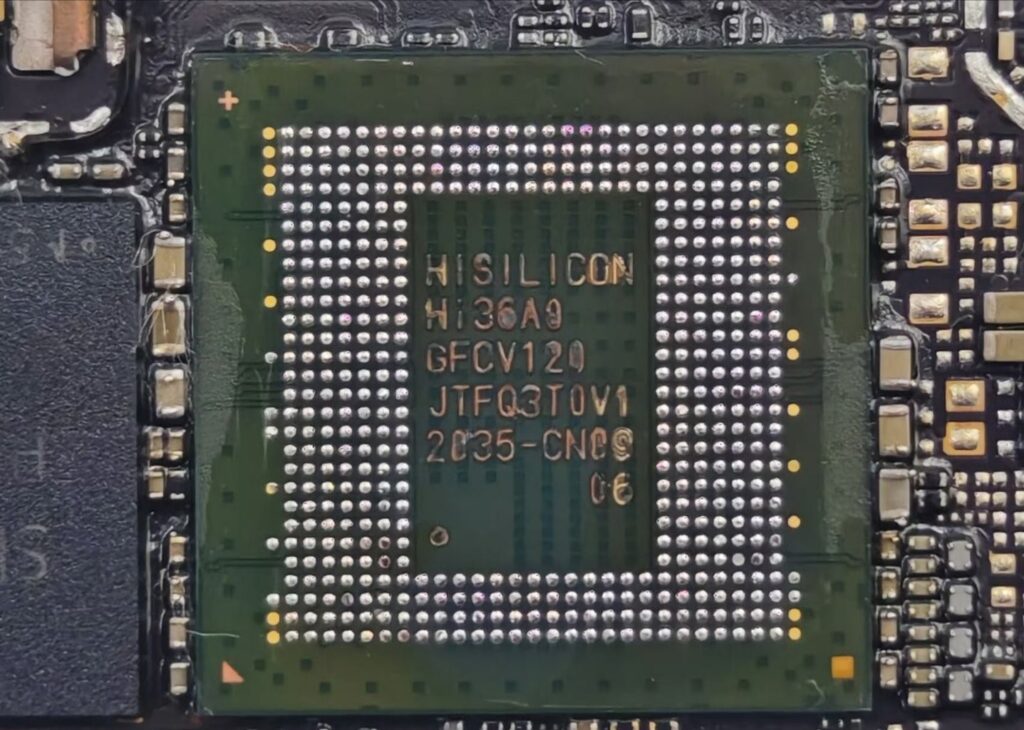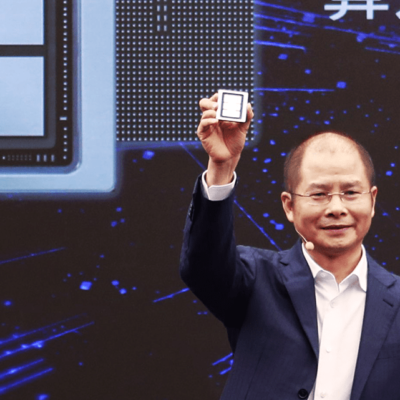Huawei has made another breakthrough in chips that will leave the US in the dust. The upcoming Mate 60 smartphone will come with a Kirin 9000s processor, which is a mysterious chipset that has not been officially revealed by Huawei yet. According to some leaked benchmarks, the Kirin 9000s has a CPU configuration of 1 + 3 + 4 cores, with a performance core clocked at 2.62GHz, which may be based on the A78 architecture. The chipset is detected as 5nm by some hardware detection software, but it should actually be 7nm.
The phone is displayed as a 4G network, but the test result is at the level of 5G. The Kirin 9000s is Huawei’s own creation, using chip stacking or other methods to overcome the limitations of the 7nm process node and achieve a performance level comparable to a 5nm process node. The Kirin 9000s may also support 5G networks, despite being detected as a 4G network by some software.

But what is chip stacking, you wonder? And how did Huawei manage to do it? Well, chip stacking is a technique that makes chips more powerful and efficient by stacking multiple layers of silicon on top of each other, instead of cramming more transistors into a single layer. It sounds simple, but it is actually very hard to do because it requires precise alignment, bonding, and interconnection of the layers, as well as dealing with the heat and power issues that arise from such a dense structure. But Huawei has apparently figured it out. The company has filed a patent for “a type of chip stacking package and terminal device” that promises to be significantly less expensive than existing chip stacking methods.
The patent describes a method that does not use through-silicon vias (TSVs), which are tiny holes drilled through the layers to connect them electrically. TSVs are costly and complex to make and can cause reliability problems over time. Huawei’s method uses metal bumps instead of TSVs, which are easier and cheaper to produce.
Why does Huawei need chip stacking, you wonder? Well, because the US government has cut off its access to the most advanced chip-making technologies in the world, by imposing sanctions and export restrictions on Huawei and its suppliers.
Huawei can no longer buy chips from TSMC, the world’s largest contract chip maker, which uses cutting-edge 5nm process nodes to make chips for Apple, Qualcomm, and others. Huawei is stuck with older and less efficient process nodes, such as 28nm or 14nm.
The company’s rotating chairman Guo Ping recently said at a news conference that Huawei will use “area for performance and stacking for technology” to boost its chip capabilities. He said that by increasing the area and stacking, Huawei can achieve higher performance and competitiveness with less advanced processes. He also said that Huawei has more than 100,000 active patents worldwide and that it earned more patent income than it paid out in fees to other companies for a second year in 2022.
Wait a minute.
Does Huawei have patents? And it earns more from licensing them than paying for them? How is that possible? I thought Huawei was supposed to be a thief that steals technology from US companies. That’s what the US government has been accusing Huawei of for years, right? Fraud, sanctions violations, racketeering, theft of trade secrets. You name it, Huawei did it.
But how can Huawei steal technology that it already has patents for or that is publicly available? How can Huawei steal technology that is more advanced than what the US companies have? How can Huawei steal technology that it can improve upon with its own innovation? These are questions that the US government has never answered convincingly. In fact, many of the cases where Huawei was accused of stealing technology have either been cleared of wrongdoing or settled amicably with the plaintiffs. Meanwhile, Huawei has sued some US companies for infringing its patents, such as Verizon and CNEX.
And now, there’s even more. Huawei’s GPU is self-developed: Maleoon 910.
The Maleoon 910 GPU is a self-developed graphics processor by Huawei, which is used in the Kirin 9000s chipset that powers the Mate 60 Pro smartphone. The Maleoon 910 GPU supports OpenGL 3.2 and has a 64-bit architecture. It is said to be more powerful and efficient than the Mali-G78 GPU that was used in the previous Kirin 9000 chipset.
There are even rumours that Huawei can stack two 14nm chips to make a 7nm chip. This 34/2 = 7 math is simple but the chip tech is a bit complicated.
So, what does this all mean for the smartphone market? It means that Huawei has a huge advantage over its competitors, especially in China, where it still has a loyal fan base and a strong distribution network. that Huawei can offer a premium flagship device that can outperform any other phone in the market, at a lower price and with better battery life and can challenge the dominance of Apple and Samsung, and reclaim its position as the world’s top smartphone maker.
And what does this mean for the US? It means that the US has failed miserably in its attempt to cripple Huawei. The US has tried everything to stop Huawei from making chips and smartphones, from banning it from buying chips from TSMC to accusing it of stealing technology from US companies, to pressuring its allies to exclude it from their 5G networks.
The foundation of the US empire is based on lies, propaganda and sanctions. The US likes to pretend that it is the champion of democracy, human rights and freedom, but in reality, it is the opposite. It lies about its own history, its own crimes, and its own motives. It uses propaganda to brainwash its own people and the world, to make them believe that it is always right and always good. It uses sanctions to punish and isolate anyone who dares to challenge its hegemony and interests. It does not care about the suffering and misery of millions of people who are affected by its policies.
But the US is running out of cards to play, as Huawei has made a breakthrough that will change the game.
If Huawei is ready to share its chip with the rest of the Chinese semiconductor industry, then it means that China will have a huge advantage over the US and other countries in the field of semiconductors. Huawei and other Chinese companies will be able to offer faster, cheaper, and smarter products and services to their customers. They will also be able to reduce their dependence on foreign suppliers and avoid US sanctions.
The US has wasted its time and resources on trying to sabotage Huawei which will backfire and boomerang, instead of focusing on its own innovation and competitiveness and has lost its edge and influence in the global market, and it will soon be overtaken by Huawei and China.
Uncle Sam looked down on the rest of the world, especially the sleeping dragon in the east. He thought he could bully the dragon and make him obey his will. He imposed sanctions, banned trade, and spread lies about the dragon. He did not realize that he was poking a sleeping giant, who was quietly developing his own strength and innovation. He wished he had left the dragon alone, but it was too late. The dragon was angry and hungry, and he was not going to let Uncle Sam get away with his arrogance and aggression.
Or, to put it more simply, it means that the US is screwed. 🤣





